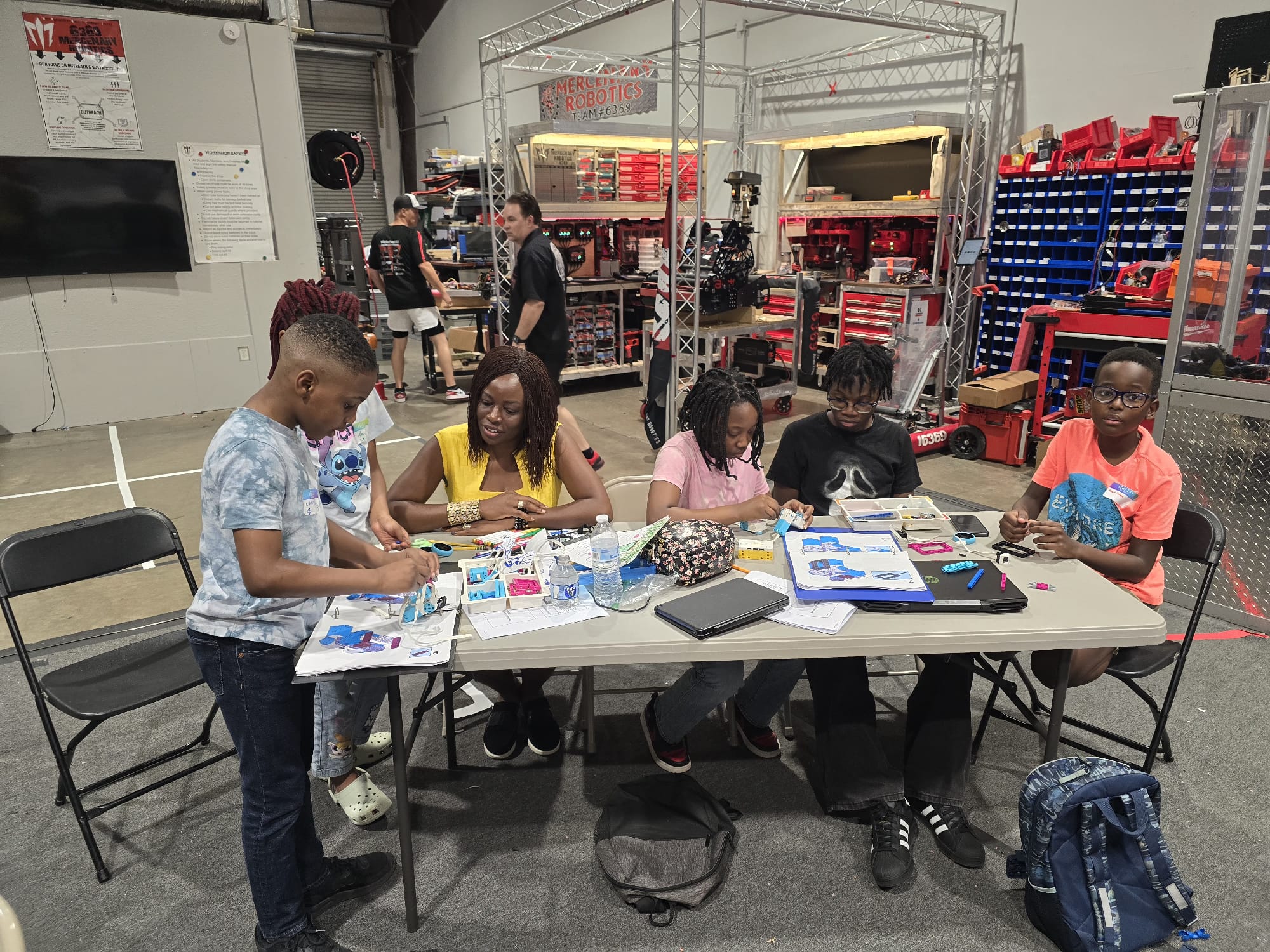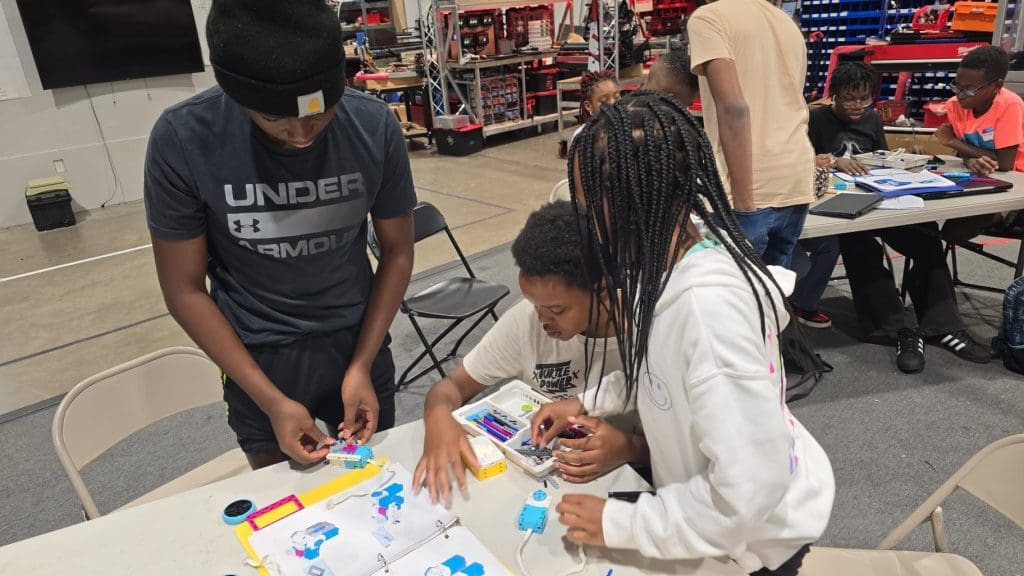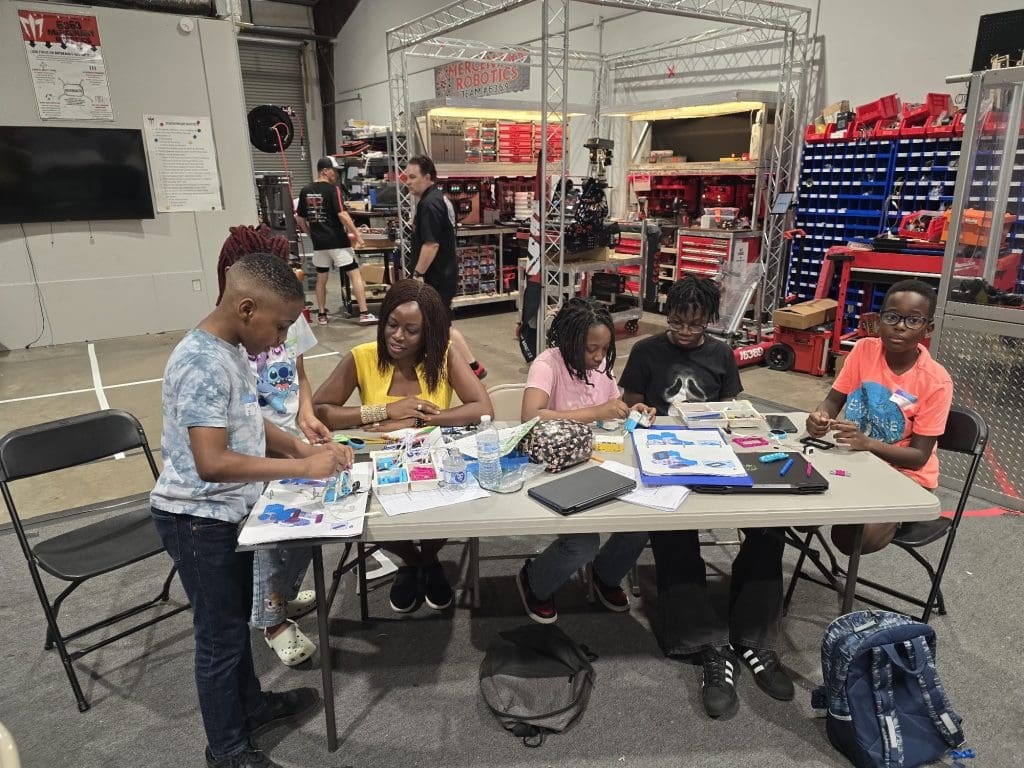A Transformative Start: Day One of McKinney STEAM Academy Camp
The McKinney STEAM Academy Camp, powered by the Glappy Foundation and WAAW Foundation, kicked off with a burst of excitement and energy. Designed specifically for students of color and African descent aged 11 to 18, this camp is a unique opportunity to immerse in the world of STEM—Science, Technology, Engineering, and Mathematics. Held at McKinney STEAM Academy, the camp aims to inspire and empower the next generation of innovators in fields like Robotics, Artificial Intelligence (AI), Cyber Security, Renewable Energy, Web Development, Entrepreneurship & Financial Literacy, and Leadership.
Let’s dive into the exhilarating experiences of Day One and explore how this program is setting the stage for an unforgettable week of learning and discovery.
Morning Session: Welcoming Future Innovators
1. Arrival and Registration
Day One began with a buzz of anticipation as students arrived at McKinney STEAM Academy. The registration desk was abuzz with activity as students checked in, received their welcome kits, and prepared for the day ahead.
2. Opening Ceremony
The camp officially commenced with an inspiring opening ceremony. Camp coordinators, along with representatives from the Glappy Foundation and WAAW Foundation, welcomed the students with enthusiastic speeches. These addresses highlighted the significance of STEM education and its impact on future career opportunities. The energy in the room was palpable as students, many of whom were attending such a camp for the first time, were filled with excitement and curiosity.
3. Orientation and Camp Overview
Following the ceremony, students were introduced to the week’s activities. The orientation provided an overview of what to expect, including hands-on workshops, team challenges, and guest lectures. The focus for the day was on Robotics—a field that blends engineering with technology to create innovative solutions.
Robotics Workshop: Dive into the World of Robotics
1. Introduction to Robotics
The morning workshop on Robotics was a highlight of the day. Students began with an overview of robotics, learning about the various types of robots and their components.. The instructors provided a comprehensive introduction to the fundamental principles of robotics, setting a strong foundation for the hands-on activities to follow.
2. Building Robots
Armed with robotics kits, students were divided into small groups and started building their own robots. Under the guidance of expert instructors, they followed step-by-step instructions to assemble their robot models. This practical activity not only reinforced theoretical concepts but also fostered teamwork and collaborative problem-solving.
3. Programming Fundamentals
With their robots assembled, students moved on to programming. Using user-friendly coding environments, they learned to write basic code to control their robots. This included commands to make the robots move, turn, and respond to obstacles. Programming was introduced as a way to bridge the gap between hardware and software, demonstrating how code brings robots to life.
Lunchtime: Connecting and Reflecting
Social Lunch Break
Lunch was a welcome break, providing students with an opportunity to relax and socialize. The camp provided a nutritious meal, and students were encouraged to connect with their peers, share their experiences, and discuss their interests in robotics. This social time was essential for building relationships and fostering a sense of community among the campers.
Afternoon Activities: Challenges and Exploration
1. Robotics Challenges
The afternoon was dedicated to putting learned skills to the test. Students participated in a series of robotics challenges designed to push their creativity and problem-solving abilities. Challenges included navigating a maze and completing specific tasks with their robots. These activities added a competitive edge to the learning process, making it both fun and engaging.
2. Introduction to AI
To set the stage for the upcoming days, students received a brief introduction to Artificial Intelligence (AI). They explored the basics of AI, including its applications in robotics and other fields. This session provided a glimpse into how AI can enhance robotics and prepared students for more advanced topics in the days to come.
Evening Wrap-Up: Reflecting and Preparing for Tomorrow
Debrief and Reflection
As Day One came to a close, students participated in a debriefing session. They reflected on the day’s activities, discussed challenges faced, and shared their learnings with each other. This reflection time was crucial for reinforcing the day’s lessons and preparing students for the next day’s adventures.
Key Highlights from Day One
- Robotics Fundamentals: Students gained a foundational understanding of robotics, including assembly and programming.
- Hands-On Experience: Building and programming robots provided practical, hands-on learning and encouraged teamwork.
- Community Building: The camp environment fostered social connections and a sense of belonging among students.
- Preparation for Future Learning: The introduction to AI set the stage for exploring more advanced topics in the coming days.
What’s Next?
As we look ahead, Day Two promises to build on the excitement and knowledge gained today. Students will delve deeper into Robotics and begin exploring new STEM areas, including AI and Cyber Security. The camp is designed to provide a comprehensive experience, and each day will bring new challenges and opportunities for growth.
The McKinney STEAM Academy Camp is more than just a series of workshops; it’s a transformative journey that empowers students to explore their passions, develop critical skills, and envision their future in STEM. We are thrilled to witness the progress and achievements of our campers as they continue their exploration of the world of STEM.




